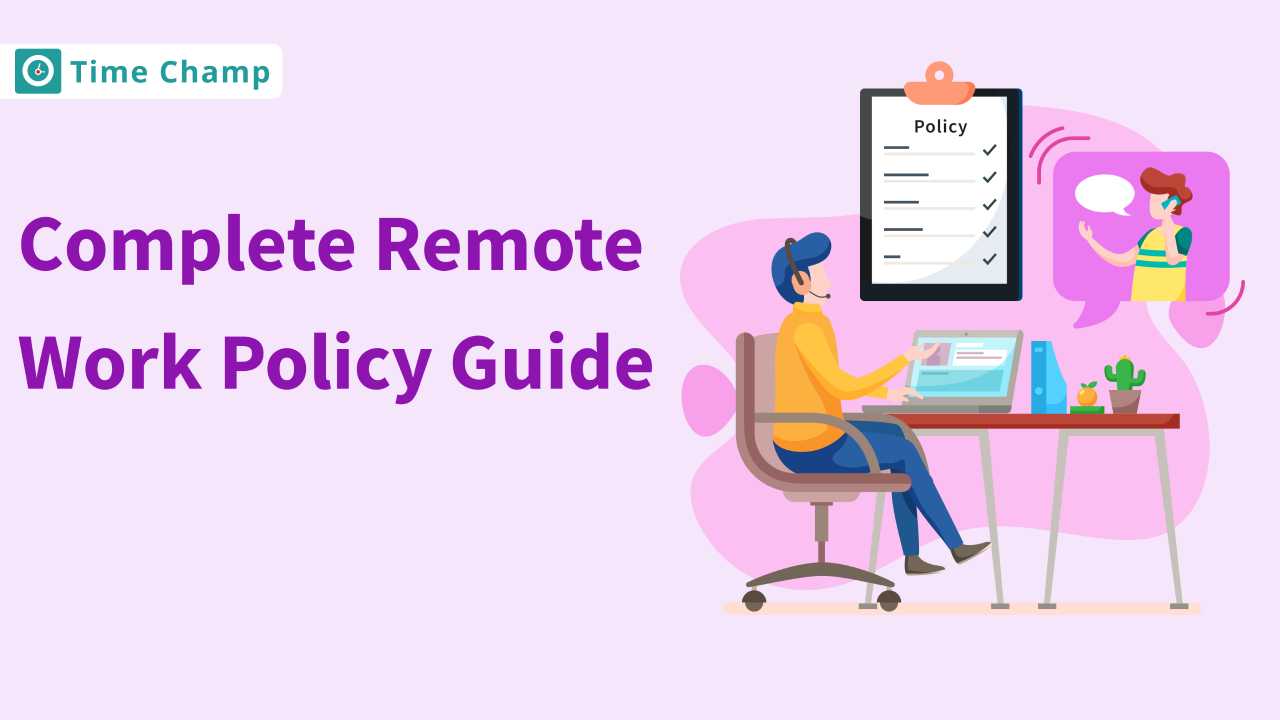As a manager, it can be challenging to balance employee needs and productivity while staying on top of trends in a hybrid work environment. Understanding key statistics about hybrid work will give you a clearer sense of where the future of work is headed. In this blog, we’ve gathered 40 essential hybrid work statistics to help you stay ahead, boost performance, and create a thriving, balanced workplace. Let’s dive into the most important statistics for you.
Key Hybrid Work Statistics:
It’s surprising that nearly 74% of companies are looking to retain the hybrid work model as a long-term solution, which reflects the rising levels of employee satisfaction and productivity in hybrid setups.
Do you know that 83% of workers prefer to work in hybrid setups rather than fully remote or traditional office setups, and thus, it demands flexibility in their work environments
According to the NeuroLeadership Institute, hybrid work has proven to increase employee retention, which can be an excellent talent retention strategy within your organization.
70 percent of the managers testified that their hybrid teams meet or exceed productivity goals, which indicates potential for performance improvement.
More than 44% of employees say that they would take a pay cut to be able to work hybrid, stressing how much they would like flexibility.
Hybrid Work Productivity and Performance Insights:
A study conducted by Prodoscore Research demonstrates that hybrid employees, on average, are 8% more productive than workers both in offices and working from home. It highlights the benefits of flexible schedules, enabling employees to optimize their working conditions for greater effectiveness.
A Gartner survey reports that 74% of CFOs plan to permanently shift some employees to hybrid work arrangements. The primary reason for this decision is the belief that hybrid work will enhance worker productivity and lead to cost savings for the organization.
As per a McKinsey survey, 58% of employees reported increased productivity with hybrid work. This increase is primarily due to greater flexibility and control over their schedules. Therefore, you could similarly benefit by offering hybrid options to your team.
59% of hybrid employees have better job satisfaction which directly equates to their productivity. A satisfied workforce is more likely to be an engaged workforce. Therefore, consider how hybrid work may positively contribute to your team’s overall well-being and output.
According to a Salesforce report, 71% of employees believe that the hybrid work model improves their productivity. The report attributes this increase to better work-life balance and greater control over work environments.
Hybrid Work Statistics by Location:
In professional services, 65% of firms have implemented a hybrid model, and 21% permit fully remote work. This industry leads in embracing hybrid work, as professionals like consultants and legal advisors need to balance office tasks with client meetings. Think about how similar flexibility might boost productivity and client relationships within your team.
Since Atlassian adopted hybrid work policies, the proportion of employees working more than two hours away from an office jumped from 14% in FY 2020 to 57% in FY 2023. This shift clearly shows that hybrid work can extend your talent pool, letting you bring on board members from diverse locations who may not be close to an office.
A study by Okta reveals that 72% of European companies have adopted hybrid work, leading to higher employee satisfaction. This trend exemplifies how Europe is embracing hybrid work, which may provide a compelling reason for you to consider similar flexibility to boost morale in your team.
Cities like San Francisco and New York City also experienced a rise in the demand for hybrid work, as 58% of all employees want to spend some working hours at home and others in the office. This trend may be changing the patterns of migration as people look for housing that meets the balance between access to the city along with flexibility of working from home. Updating your policies along these trends can also align support to employees’ lifestyle requirements.
Structured hybrid models involving pre-set office days become very popular among Fortune 500 companies to maintain a proper balance between flexibility and organizational order while increasing overall productivity and job satisfaction.
Hybrid Work Statistics on Employee Engagement and Collaboration:
You would be surprised to find that hybrid employees have the highest engagement rates at 35%, followed by remote at 33% and in-office workers at 27%. It seems that hybrid work schedules allow your team to have flexibility, which can then lead to stronger engagement levels compared to other types of work arrangements.
Around 70% of hybrid workers feel closely connected to their company’s culture, which is at the core of retention, but only 34% feel closely connected with their colleagues, so there is plenty of scope for more social initiatives to strengthen interpersonal connections.
About 43% of hybrid employees want team building that is more engaging. Adding those could significantly add to the team’s feeling of camaraderie and company culture, giving your hybrid setup a feel-good value.
Remote workers who have transitioned to the hybrid model said they needed interaction with colleagues, with 54% wanting in-person onboarding opportunities. This demonstrates the value of blended approaches in building relationships, especially at the onset.
Flexibility in communication has proven to be beneficial because 54% of hybrid employees report that tools like Zoom and Slack enhance their productivity. These tools allow collaboration across locations, hence hybrid employees can perform at their best even when away from their teams.
Hybrid Work Statistics on Work-Life Balance:
According to Cisco, 78% of employees believe that hybrid and remote work has enhanced their overall well-being. Employees can then manage both their personal and professional lives.
According to a FlexJobs study, 71 percent of professionals stated that hybrid work assists them in having a better work-life balance and flexibility at work. This can significantly cut down stress and improve job satisfaction.
According to the Institute for Employment Studies report, 54% of employees in a hybrid model reported experiencing reduced commuting stress, thereby majorly contributing to a healthier work-life balance overall.
According to the Pulse survey conducted by the Future Forum, 75% of employees who work in a hybrid setting believe that flexibility has enabled them to spend much quality time with their families together.
A Gallup poll also suggests that 54% of hybrid role employees reported greater job satisfaction due to flexibility, autonomy, and better work-life balance found in hybrid work arrangements.
Hybrid Work Statistics on Recruitment and Retention:
A Gartner survey reports that 55% of respondents would consider quitting their current job for a new one that offers flexibility in work patterns. This shows the importance of Hybrid work models in retaining talent.
A PwC report indicates that 83% of employees favor a hybrid work model, while 55% prefer working remotely for at least three days per week, indicating a demand for organizations to adopt hybrid structures to attract and retain talent.
According to a FlexJobs survey, 50% of employees reported that they would accept a pay cut to work remotely or in a hybrid environment. This points to the reality that flexible work arrangements are essential tools in recruitment and retention strategies.
A McKinsey study reported that 58% of companies adopting hybrid work models witnessed an increase in the diversity of their talent pool. Thus, hybrid work can enhance recruitment by attracting a variety of talent profiles.
Hybrid Work Statistics on Technology and Tools:
More than 83% of hybrid teams use three or more collaboration tools daily, including Slack, Microsoft Teams, and Zoom. Such a high adoption rate speaks to the need for digital tools to maintain connectivity and productivity among hybrid teams.
According to Gartner, 68% of employees prefer working for organizations that provide flexible work technology, such as virtual desktops and cloud-based applications. This desire emphasizes how important technology is to full-time hybrid work.
According to a Cybersecurity Insiders survey, 76% of companies with hybrid work environments have increased their investments in cybersecurity tools. This level of investment shows that companies are actively working to protect data in various work environments.
According to a study by Statista, the use of virtual meeting software in the hybrid workplace increased by 68 percent from 2020 to 2023. This indicates a need for efficient communication solutions to facilitate flexible work models.
Hybrid Work Statistics on Health and Well-Being:
According to a Gallup study, employees who work in hybrid work arrangements reported 32% better mental health compared to employees working full-time in offices. This indicates that hybrid work models can reduce stress and enhance overall psychological well-being.
According to Buffer’s State of Remote Work report, 47% of hybrid workers reported lower levels of burnout compared to those working fully remotely and fully in-office. This suggests that hybrid work offers a balanced approach that helps reduce feelings of burnout.
According to a Harvard Business Review study, 56% of hybrid workers reported being more physically active since adopting flexible work schedules. This increase can be attributed to reduced commuting time, the biggest potential space for incorporating more movement into daily routines.
According to FlexJobs’ research, 87 percent of hybrid workers are more satisfied with their jobs compared to those in a traditional setup. Improved job satisfaction has often been associated with better well-being because happy workers, tend to have higher emotional and lower stress levels.
Hybrid Work Statistics on Future Trends:
A report by HRDive revealed that 70 percent of employers are seeking to increase mental health resources for hybrid employees, reflecting a rapidly growing interest in workforce well-being and support at work.
McKinsey reports that, by 2025, 90% of tech companies will implement hybrid work models. This is a highly impactful, transformative shift toward more flexible work environments within the industry.
A PwC survey revealed that 65% of employees regard flexibility in the working arrangements as the most important factor when looking for jobs over the next five years, thereby concentrating efforts on work-life balance and, in general, well-being.
Also Read: What is the Future of Remote Work
Conclusion
In conclusion, embracing the hybrid work model can significantly enhance your team’s productivity, job satisfaction, and general well-being. This list of 40 key hybrid work statistics reminds you that flexibility, collaboration, and employee engagement are Integral aspects of modern workspaces. By prioritizing a hybrid approach, you can retain top talent and foster a productive, high-performing workplace that takes care of your employees’ needs. Keep all these insights in mind as you lead your organization into the future of work!
Unlock your hybrid work model's potential with Time Champ and boost your team's productivity today!
Signup for FreeBook DemoFrequently Asked Questions
The hybrid work model combines remote and in-office work environments, allowing employees to choose their place and time of work. This flexibility meets individual preferences and improves work-life balance.
The hybrid model is gaining popularity these days due to increased employee satisfaction, higher productivity levels, and the desire for flexibility in work environments. In fact, many organizations benefit in terms of retaining top talent and fostering a good workplace culture with this approach.
Hybrid employees tend to be 8% more productive than those in all-office or all-remote work environments. One reason for this productivity is the ability to customize work conditions to meet individual needs.
Hybrid work arrangements improve mental well-being, decrease commuter stress, and increase job satisfaction. Surveys show that 78% of workers believe that hybrid work significantly improves their general sense of well-being.
An effective hybrid work model can be introduced by setting expectations for workers, fostering open communication between management and employees, integrating technology that makes it possible to collaborate remotely, and regularly seeking feedback from staff to improve policies and procedures.








